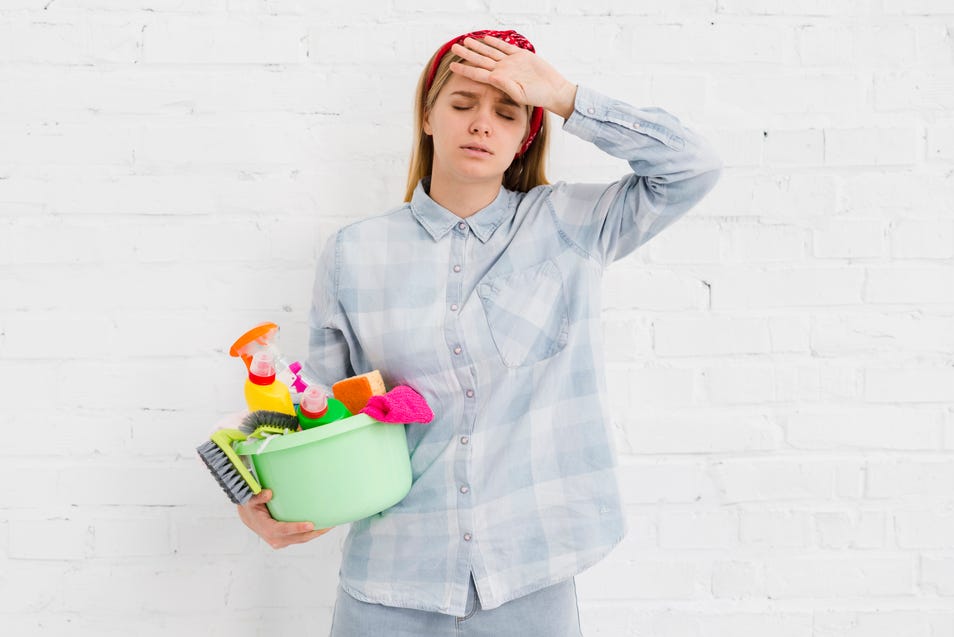Don’t Skip These 5 Habits to Save Your Bathroom from Mold

We all have cleaning battles we’d rather not talk about for fear of seeming gross. In reality, as we work towards turning our bathrooms into a wellness oasis, certain challenges are more universal than we think.
That’s right! Bathroom mold is one of those cleaning challenges we often ignore—as is the embarrassment that surrounds it.
Dealing with mold in the bathroom can be a frustrating and persistent problem for many homeowners because bathrooms are perfect breeding grounds for mold and should be taken care of immediately.
But there’s a silver lining. By adopting simple yet effective habits, you can effectively prevent and eliminate mold growth, ensuring optimal bathroom safety for everyone.
Read on to learn how to stop mold in the bathroom by using a few practice strategies and habits that you can implement to ensure a fresher, more hygienic space.
1. Always switch on the fan
The unaddressed steam, water, or moisture in the bathroom can lead to mold growth. Therefore, the next time you take a hot, steamy shower, remember to switch on the bathroom fan or vent and leave it running for at least half an hour.
Switching on the bathroom fan or vent will help remove the excess moisture from the air, preventing it from settling on surfaces and creating a breeding ground for mold.
Since humidity and moisture can cause mold to build up, an unpleasant smell, and grout discoloration, it is important to properly ventilate the bathroom using fans, air vents, and windows.
2. Air dry your wash rag, loofah, or sponge
After showering or bathing, hang up your wash rag, loofah, or sponge to air dry. This will reduce the chances of mold forming on these items as they won’t be able to trap water or take longer to dry out.
3. Put your shower products on a soap dish or rack
Soap dishes, racks, and shower caddies serve more than just organizational purposes. They actively help keep shower products dry.
When soap and shampoo containers are left in pooled water, they foster a conducive environment for mold growth. Elevating them on a dish or rack ensures they remain dry between uses.
4. Squeegee after every shower
Squeegeeing after every shower helps remove excess water from surfaces like glass doors and tiles, reducing the moisture levels that can foster mold growth.
This simple habit not only helps maintain cleanliness and prevent soap scum buildup but also preserves the integrity of your bathroom fixtures, ensuring a hygienic and longer-lasting shower environment.
Related: Say goodbye to limescale on shower doors
5. Opening the shower door or curtain after the shower
After you finish showering, keep the shower door or curtain open to let moisture dissipate, which lowers the chances of mold developing.
This habit will aid in ventilation, reduce humidity levels in the bathroom, and maintain a clean, dry, and mold-free showering environment. It will also promote better hygiene and prolong the lifespan of bathroom fixtures.
FAQs
What are some common signs of mold growth in bathrooms?
Some of the most common signs of mold growth in bathrooms include visible black spots, musty odor, peeling or discoloration of wallpaper, water stains on walls or ceilings, and allergic reactions like sneezing, coughing, or skin irritation.
How often should I inspect my bathroom for potential mold issues?
Inspect your bathroom for potential mold issues at least once a month. Regular checks allow you to catch and address any early signs of mold growth, preventing larger problems and ensuring a clean, healthy bathroom environment.
Can mold develop in the toilet tank?
Yes, mold spores and mildew thrive in dark, humid spaces, such as the toilet bowl and tank. Hence, it's crucial to regularly clean your toilet tank to deter mold and mildew growth.
.png?width=70&height=88&format=png&quality=50)